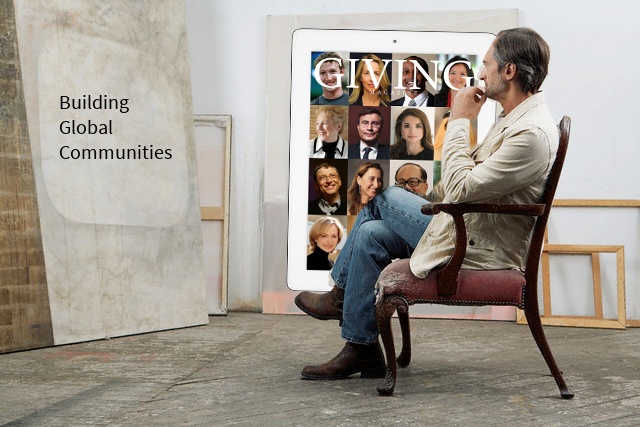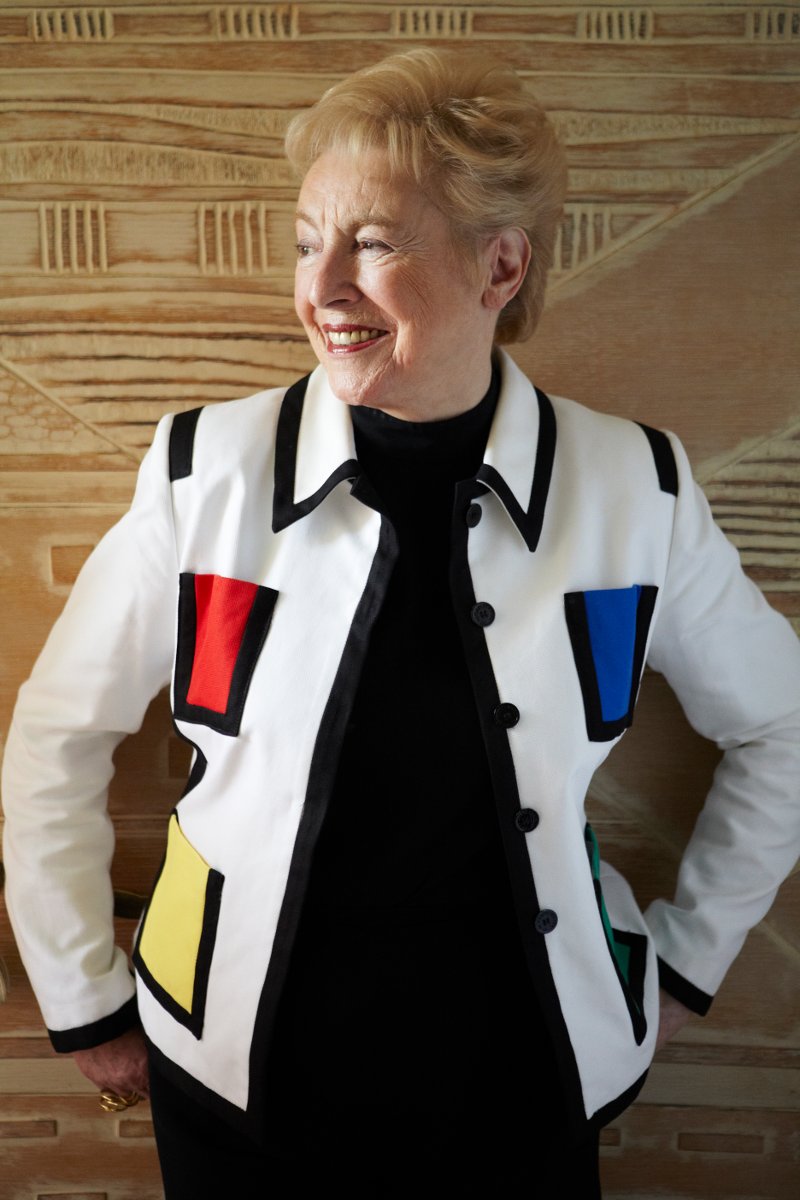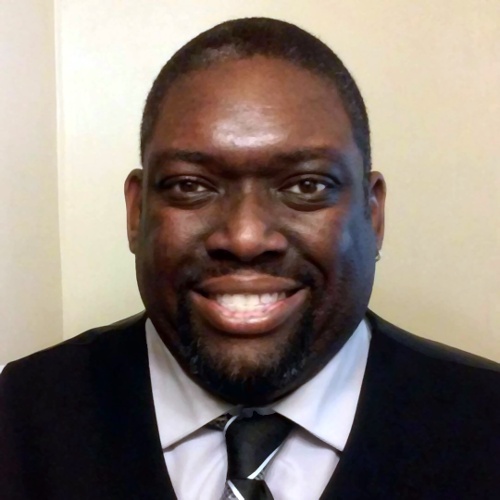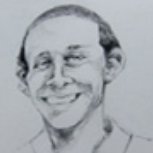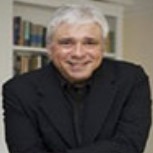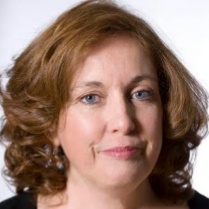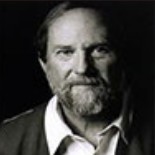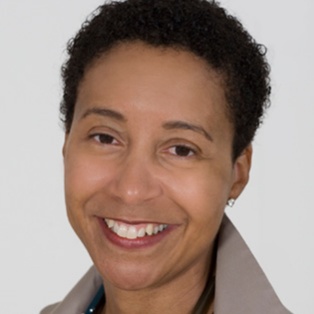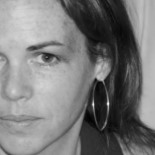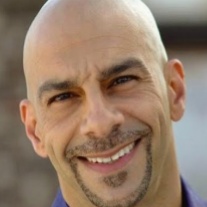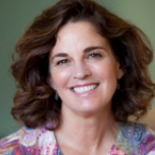Deconstructing the Giving Pledge
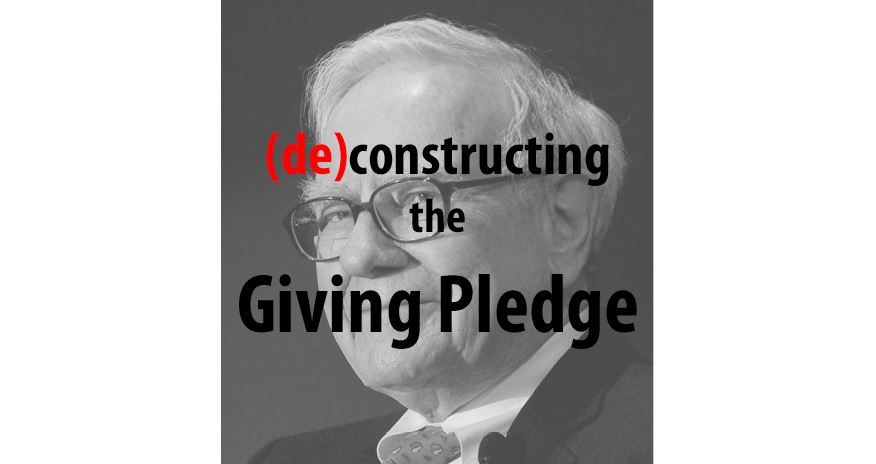
By The Editors
It began with a hush-hush dinner in New York four years ago...
Introduction
It began with a hush-hush dinner in New York four years ago, a gathering of about a dozen people with deep pockets and a serious commitment to philanthropy, to discuss ways to spread the gospel of giving. The event, organized by Bill and Melinda Gates and Warren Buffett, was deemed such as success that two more dinners took place over the next several months, with additional billionaires in attendance. Within a year, the conversations had led to a revolutionary idea—getting billionaires to make a “giving pledge” to give away at least half of their wealth during their lifetime or at death—and what is arguably the world’s most elite, if loosely organized, club.
Today, some 114 individuals and couples have signed the Giving Pledge. As the campaign’s website notes, the pledge represents a moral commitment—it is not a contractual obligation. Nor does it involve a pooling of assets, or dictate a direction for charity. And while some members of the “club” do meet periodically to discuss different approaches to giving, the expressed goal is simply to draw more billionaires into the culture of giving.
How could anybody find fault with that? But once the initial dropped-jaw reaction subsided, the pledge drew its fair share of critics. It has been called a public relations gesture amidst a global recession and a widening wealth gap. Particularly outside the United States, some people found it ostentatious to flaunt both private fortunes and personal generosity. And some have worried about the potential influence on public policy of foundations with multibillion-dollar endowments.
In this context, it’s useful to read the letters written by the giving pledgers at the urging of the Gateses and Buffet. While not everybody wrote a letter, an impressive number chose to go on the record with their personal histories, their reasons for giving and the objects of their philanthropy. Some embraced the notion of the Giving Pledge with the ardor of the newly converted; still others observed that they had long ago established foundations and given away huge sums. “I have long believed that charitable giving is a personal and private matter,” noted Larry Ellison, the co-founder of Oracle. Ellison, in perhaps the most taciturn letter in the bunch, added that he’d already donated hundreds of millions to medical research and education. “So why am I going public now? Warren Buffett personally asked me to write this letter because he said I would be ‘setting an example’ and ‘influencing others’ to give. I hope he’s right.”
In the following section, Giving Magazine takes a close look at those letters and their authors. We present a photo gallery of about fifty of the signatories. We review their reasons for giving, and look at who—or what—is getting all that money. We discuss why the pledge has far fewer followers outside the United States. Finally, we explore the ways that some of these billionaires—many of them modern-day equivalents of the Carnegies and Rockefellers of the 1800s—amassed the fortunes they are giving away. Whether or not the Giving Pledge is changing the face of philanthropy, as Fortune magazine suggested when it was announced, the letters certainly reveal the face of philanthropists.
Who Are They?
So who are they, these men (and a handful of women) who have signed the Giving Pledge? A few are household words, at least as famous as the three people—Bill and Melinda Gates and Warren Buffett—who initiated this project. There are the rock stars of the business world, Richard Branson and Ted Turner; Facebook’s Mark Zuckerberg; politicians Michael Bloomberg and Jon Huntsman. Others may not be global brands, but the names of the companies they’ve founded are—eBay (Pierre Omidyar), AOL (Steve Case), Oracle (Larry Ellison)—or, because their names are stamped on hospitals and research institutes and school buildings, are famous for their philanthropy rather than for the sources of their wealth. And, except to close readers of the financial pages, a surprisingly large number are relatively obscure. Thus reviewing the Giving Pledge letters is sometimes, to paraphrase the book title, like meeting the billionaire—or hedge-fund manager—next door.
One general characterization, however, is that the fortunes of most of them—particularly the newly-minted billionaires—mirror the economy. The great wealth that was created 150 years ago by the likes of Andrew Carnegie and John D. Rockefeller, captains of industry who are the forebears of today’s benefactors, came from building—or extracting—tangible things like steel or railroads or oil. By contrast, much of the money represented by our Giving Pledge letter writers comes from intangibles—for example, computer technology that provides the market data that feed the investment companies that trade in financial instruments that are many times removed from the actual objects of such transactions.
Thus it is that we find dozens of the princes of Silicon Valley and its satellites (Zuckerberg and Facebook cofounder Dustin Moskovitz, Gates and Microsoft cofounder Paul Allen, Netflix founder Reed Hastings, retired Cisco chairman John Morgridge) mingling with managers of hedge funds and private equity firms. In this company, longtime bold-face names like Carl Icahn and Michael Milken look almost old-school, and individuals who actually manufacture products—Sara Blakely of Spanx, David Green of Hobby Lobby—seem positively quaint.
But in another respect, today’s billionaires bear a fundamental resemblance to their 19th-century predecessors: Many have made a lot of money in sometimes dubious ways. Today’s robber barons aren’t literally breaking heads to bust unions—like Carnegie and his henchman (and art patron) Henry Clay Frick in the Homestead Steel Strike of 1892—but many have left considerable damage in their wake. If he didn’t match John D. Rockefeller’s ruthless monopolistic behavior (and success) in the creation of Standard Oil, Gates himself was repeatedly accused of having engaged in unlawful anticompetitive practices to promote the supremacy of Microsoft. George Mitchell, who died last year, leaving behind a foundation that gives heavily to support work in environmental sustainability, is credited with pioneering the economic extraction of shale gas—in other words, fracking. Herbert and Marion Sandler, generous underwriters of investigative journalism at ProPublica, were listed among the “25 People to Blame for the Financial Crisis” by Time Magazine for their role in marketing high-risk mortgages at the height of the housing bubble—and pocketing more than $2 billion through the sale of their bank before the market collapsed.
And while the operations of private equity firms are typically less transparent—and therefore not open to scrutiny—one thing is clear: Managers owe their immense personal fortunes in part to a highly controversial tax break called “carried interest,” which allows them to save billions and billions of dollars that would otherwise go to Uncle Sam. (Even Peter Peterson, a beneficiary of this treatment and, as he expounds in his Giving Pledge letter, an advocate for fiscal conservatism, has stated that he “can’t justify that.”)
Nor is it only America’s billionaire-philanthropists who have contributed to society’s problems. Vladimir Potanin, the fourth richest man in Russia and a leading patron of the arts, owes his wealth to the controversial “loans-for-shares” program he devised, under which banks such as his financed the privatization of large state-owned companies at bargain-basement prices. It was good for oligarchs like Potanin, not so good for the Russian public.
Indeed, Peter Buffett, Warren’s son and co-chairman of the NoVo Foundation, which was funded by his father, has suggested that philanthropists are their own chief beneficiaries. “As more lives and communities are destroyed by the system that creates vast amounts of wealth for the few, the more heroic it sounds to ‘give back’,” Buffett wrote last year in a widely-discussed op-ed piece in The New York Times. “It’s what I would call ‘conscience laundering’—feeling better about accumulating more than any one person could possibly need to live on by sprinkling a little around as an act of charity. But this just keeps the existing structure of inequality in place. The rich sleep better at night, while others get just enough to keep the pot from boiling over. Nearly every time someone feels better by doing good, on the other side of the world (or street), someone else is further locked into a system that will not allow the true flourishing of his or her nature or the opportunity to live a joyful and fulfilled life.” Harsh words, indeed—but are they fair? Net-net, as many of our billionaires might say, are they leaving the world a better or a worse place? It’s unarguable that many of the signers of the Giving Pledge are contributing significantly to the widening gap between the top 1 percent and everybody else, even while they write checks to their favorite charities. But at the same time, many of those checks surely help unlock people from the very system that Peter Buffett bemoans. At its best, thoughtful, high-quality giving—from the 2,500 libraries funded by Andrew Carnegie worldwide to the year-round preschools for poor children from birth to age five, complete with family support services and medical care, underwritten by Tulsa oilman George Kaiser—can be liberating: It informs, educates and helps prepare people who aspire to that “joyful and fulfilled life.” It’s clear from their letters that many of the Giving Pledge signers share Carnegie’s view that the very rich, through judicious giving, are the best people to address what he optimistically called “the temporary unequal distribution of wealth.” That sort of arrogance is a frequent companion to great riches. Only time will tell whether it’s deserved.
Why They Give
They want to make a difference. They want to make the world a better place. They’re grateful for the cards they drew—or, in Buffet’s rather graceless phrase, for winning “the ovarian lottery”—and want to extend the same opportunities to those less fortunate.
To a large degree, the Giving Pledge signatories seem to be singing from the same hymnbook. That’s literally true, in some cases (although the whiz kids of Silicon Valley are silent on that score). The most outspoken examples of religious-inspired philanthropy are probably David and Barbara Green, founders of Hobby Lobby, the crafts company that last June successfully contested the federal mandate requiring employers to provide contraceptives under their insurance plans. The Greens credit God for their success and, in their letter, quote 2 Corinthians to the effect that “God loves a cheerful giver.” A parental role model is another powerful motivator. Whether they grew up in the most modest of circumstances or were born into privilege (viz. David Rockefeller), many came from families that traditionally lent a hand to those less comfortable than themselves. “Philanthropy is in the DNA of my family,” says Charles Bronfman, the Canadian billionaire whose fortune comes from the Seagram Company. They now find themselves in possession of far more money than most of them had ever imagined (with some notable exceptions, viz. David Rockefeller) and, having set aside enough funds to assure more-than-comfortable lives for themselves and their children, want to use what’s left over—and that’s often 90 percent of their wealth, or more—to “give back” by helping others.
Another important issue for many is ensuring that their children aren’t crippled by a huge inheritance. “I’m not a big fan of inherited wealth,” says oilman T. Boone Pickens. “It generally does more harm than good.” The concern seems to be universal. Manoj Bhargava, who was born in India, immigrated to the U.S. and made a fortune from 5-Hour Energy drinks, says, “My choice was to ruin my son’s life by giving him money or giving 90+% to charity. Not much of a choice.” “The decision I made is not just an attempt to be remembered as a philanthropist,” Vladimir Potanin, a Moscow banker, writes. “I also see it as a way to protect my children from the burden of the extreme wealth, which may deprive them of any motivation to achieve anything in life on their own.” In fact, several of the billionaires note proudly that their children are already participating in their philanthropic activities or running foundations of their own.
Those are among the most common reasons expressed by the Giving Pledge letter writers for promising to give away vast sums of wealth. But a great many of these billionaires also repeat a less predictable refrain: Giving, they say, simply makes them happy. George Kaiser, who made his money from oil and banking, describes philanthropy as “intoxicating.” In fact, many of these billionaires declare, they get more joy out of giving the money away than they had in accumulating it. (Only Pickens, dependably contrarian, shifts the balance slightly. “I’ve long stated that I enjoy making money, and I enjoy giving it away,” he wrote. “I like making money more, but giving it away is a close second.”)
Still, if the signatories are singing the same tune, some have added grace notes about the joy of giving that are worth repeating here. “To make quarterly profits is one thing,” says Home Depot cofounder Bernie Marcus, “but changing just one life is so much better.” Richard Branson, the English business magnate and investor who appears to be having a great time whatever he does, remarks, “‘Stuff’ really is not what brings happiness. Family, friends, good health and the satisfaction that comes from making a positive difference are what really matters.” Bhargava, a onetime monk who has founded a charity in rural India, notes, “We may not be able to affect human suffering on a grand scale but it will be fun trying.” And Patrice Motsepe, a South African mining magnate who has donated money to improve life in impoverished rural areas of Cape Town, refers to the Bantu concept of Ubuntu, or human kindness, to explain that “your well-being, happiness and success is dependent upon and influenced by the well-being, happiness and success of others.”
For most of the signatories, the opportunity to change people’s lives for the better seems to be motivation enough. Unlike Andrew Carnegie, whose example is mentioned in a few letters, virtually none of these billionaires seems to cherish the notion that philanthropy can protect capitalism from socialism, or worse. In fact, what’s conspicuously absent from most of these letters is a discussion of the potential political role that philanthropy might play. At most, for the American philanthropists—on both sides of the political aisle—there is the hope that their contributions can strengthen the country by doing what government can’t or won’t. For example, activist investor and erstwhile Wall Street raider Carl Icahn writes that he hopes to “maintain America’s position as the world economic leader” by making its educational system more competitive. Without significant changes, he adds, “we will soon lose our hegemony.” A similar concern is sounded by Peter Peterson, the investment banker, former U.S. Commerce Secretary and leading fiscal conservative, who hopes to change the nation’s course because its growing debt and low savings rate “leave us very vulnerable and even threatens our national sovereignty.”
Similarly, only a few signatories weigh in one of the topics currently in vogue in some philanthropic circles—the notion that giving can potentially reap tangible rewards for the giver. AOL founder Steve Case does suggest that there may be opportunities to address a societal problem through a business “that is focused on doing well while doing good.” And hedge fund manager William Ackman goes so far as to assert that “I am quite sure that I have earned financial returns from giving money away,” although that’s occurred incidentally through the friendships he has formed and the advice he’s received as a result of his charitable activities. Regardless of the bottom line, he concludes, “Life becomes richer, the more one gives away.”
Where The Money Goes
When it comes to philanthropy, the very rich are different from run-of-the-mill donors, and not only because they have more money. Based on their Giving Pledge letters, at least, they donate less to religious groups than the population overall, and more directly to education, medical research and hospitals—contributions that are often reflected in institutions’ names like the Icahn School of Medicine at Mount Sinai (housing the Icahn Institute for Genomics and Multiscale Biology), the Carl C. Icahn Center for Science and the Icahn Scholar Program at a New England prep school, not to mention Icahn House East and Icahn House West, homeless shelters in New York. Projects “where we live and work” receive a sizable slice of the pie, just as they do for humbler folk, although the billionaires’ undertakings are predictably on a far grander scale than your average contribution to United Way.
What follows is a snapshot of some of the more intriguing donations.
Big money, big issues.
Ted Turner made a splash more than 15 years ago when, as he writes, “my $1 billion pledge was heard around the world and the United Nations Foundation was born” (and, he reminds readers, he anticipated the Giving Pledge by getting “out in front of the parade”). His foundation’s brief is to help the UN tackle issues including climate change, global health, peace and security, women’s empowerment and poverty eradication. Also working on a global scale, Richard Branson has sought to find ways to resolve international conflicts (through a group, The Elders, that includes Kofi Annan, Desmond Tutu and Jimmy Carter) and to protect the oceans (through another group, The Ocean Elders, that includes Sylvia Earle and Jean-Michel Cousteau). Jeff Skoll of eBay takes on some of the same issues, but does it by underwriting social entrepreneurs like Paul Farmer and making movies such as “An Inconvenient Truth.” Mo Ibrahim, a Sudanese-British mobile communications entrepreneur, launched a foundation to encourage good governance and leadership in Africa, using an index to evaluate national governments and issuing prizes to heads of state who follow democratic practices. “It is a moral duty and African custom to look after your extended family,” he writes. “I felt my extended family reached from Cairo to Cape Town.”
Close to home.
Many of the Giving Pledge letter writers emphasize their desire to give to projects to improve lives in their hometowns. While the Pacific Northwest, as the home of Microsoft cofounder Paul G. Allen, has been singularly blessed, and Michael Bloomberg is only one of New York’s many resident billionaires, Detroit, Houston and less glamorous cities have their share of local philanthropists. Atlanta has benefited from the attention of Home Depot cofounders Bernie Marcus (the Georgia Aquarium, the Marcus Autism Center) and Arthur Blank (the Atlanta BeltLine, a network of paths, parks and transit; and childhood anti-obesity and education reforms in Georgia). Walter Scott, Jr., a construction contractor in Omaha, is investing in the local zoo—and reminding his fellow Omahan that “there’s still room for a Buffet exhibit. Call me when you’re looking for an idea!” On other continents, mining magnate Andrew Forrest is working for sustainable improvements in the lives of “our first Australians,” and industrialist Victor Pinchuk, the first Eastern European to sign the pledge, is supporting education, healthcare and the arts in Ukraine.
Close to the heart (and other organs).
Many of the letter writers are committed to combatting some disease—think Gates and AIDS, malaria, rotavirus—but few sound as fervent as Jon Huntsman, Sr., the Utah businessman (and father of onetime Republican presidential contender Jon Huntsman, Jr.) whose mother’s death led him decades ago to “pledge to give my entire fortune to curing cancer. . . . My duty is to make sure cancer is vanquished.” First-hand experience is inspiring others to fight mental illness, neurofibromatosis, diabetes.
Not everyone who’s taken the pledge lists his or her beneficiaries—or, for that matter, has begun to disburse significant funds. Some of the younger billionaires, such as Facebook cofounder Dustin Moskovitz, admit that they haven’t yet identified the causes to which they want to contribute. Sara Blakely, founder of Spanx, the undergarment company, notes that she is focused mostly on growing her business, an effort that should eventually “pay even greater dividends to help women... in an even bigger way.” And, interestingly, Buffett, one of the biggest philanthropists of all, makes no mention of the way he’s directed his money. That’s because he channels his contributions primarily through the Gates Foundation. As he notes in his letter, with typical modesty and clarity, “this pledge does not leave me contributing the most precious asset, which is time.”
Related Articles:
CHARACTERS INCLUDE: BILL AND MELINDA GATES AND WARREN BUFFET



